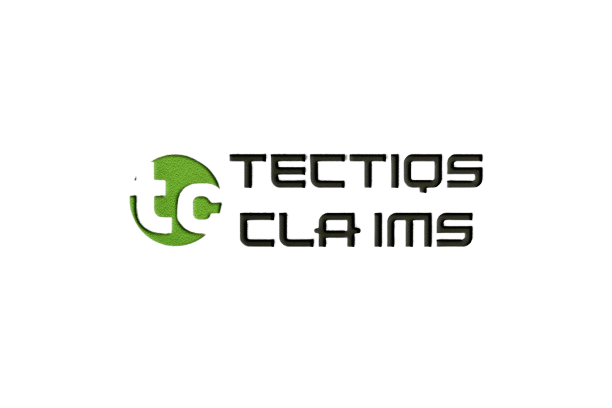What is The Future of the Insurer Claims Administration?
Advances in technology, changing customer preferences, and the ever-changing regulatory landscape are driving large-scale change in the insurance industry. As one of the critical areas of the insurance industry, the claims management is at the vanguard of this transformation. Fast forward The changing face of insurance claims management | 5 pubs.iamai | Jun 2017 to 2018 The future of insurance claims management is set to be vastly more efficient, transparent and customer-centric than it has ever been. In this article, we delve deep into the evolving trends and breakthroughs which are redefining the future for insurance claims management.
Technological Advancements
AI and ML (Artificial Intelligence and Machine Learning)
Claims management is being transformed with the help of artificial intelligence (AI) and machine learning (ML) which can automate traditional, repetitive tasks, enable predictive decision-making and streamline the fraud detection process. The use of AI chatbots and virtual assistants has grown to securely manage the initial customer interactions to reduce the friction in the claims reporting journey.
AI is useful for carrying high-volume mundane functions like data entry, document processing, and initial claims evaluation, allowing human adjusters to focus on solving complex cases. Furthermore, insurers are now able to employ machine learning algorithms to discern patterns and irregularities in claims data to signal possible fraud and to respond to the same proactively. AI and ML powered predictive analytics can predict claim outcomes and settlement amounts based on historical data, assisting insurers in managing reserves better.
Blockchain Technology
The distribution of the ledger on blockchain creates a mutual agreement between entities even if they don’t fully communicate with each other, it reduces the risk of fraud, enables data integrity by being secure and it creates a sense of transparency for the involved parties. The blockchain, which allows for an immutable record of transactions, can create trust between insurers and policyholders.
The result is a transparent, secure and unchangeable ledger of all claims activities, enhancing accountability, and trust. Smart contracts can be used to automate the payment of claims when specific, predefined conditions are met, shortening the time to settlement and reducing administrative burdens. Additionally, blockchain is decentralized so that the privacy of claims data is maintained and only available to those with permission to see it.
Customer-Centric Innovations
Customer Experience Personalization (CX)
The expectation of customers is increasing, and hence, insurers are stressing more on personalized and intuitive experiences for the whole claims lifecycle. This is to be achieved through technology. The user-responsive digital platfors and mobile applications are being developed by the insurers to enable the policyholders to report claims, upload document and track the claim status real-time.
Finally, enabling multiple communication touch points, including phone, email, chat, and social media, ensure customers can contact with the insurers the way meets each customer’s preference. Tools driven by AI know when and what the customer probably wants to be alerted about) and if a lot of notice is allowed (think a storm dialing an area code 7 hours before), the AI-enabled system can keep policyholders informed and at least a little less stressed out going through the claims process.
Self-Service Capabilities
Not only does offering self-service options empower customers, but it also decreases claims adjuster work loads. Claims initiation and communication can be leveraged through self-service portals, so that policyholders can reduce the need to meet adjusters face to face for minor, broken-down information. Augmented reality (AR) technology and remote video inspections enable policyholders to complete virtual property inspections, expediting the claims process and making it more convenient.
Data-Driven Insights
Advanced Analytics
In claims management, data analytics is now more relevant than ever, helping professionals to glean meaningful insights that help direct strategic decisions and achieve greater operational efficiency. These analytic predictions enable insurers to deploy resources more efficiently to cope with early claim trends and volumes. This type of advanced analytics can help to predict the risk associated with a claim and insurance companies can develop strategies to follow whether to avoid the loss to the maximum.extent possible. Data analytics will also track KPIs to determine the efficiency of the claims process and highlight areas where it can be enhanced.
Internet of Things (IoT)
Insurance Claims Management with IoT The IoT is changing the way insurance companies use data to assess risk and handle claims. Simply put, telematics devices capture driving behavior which is then used in auto insurance to provide usage-based insurance (UBI) as well as more accurately determine claims estimates. IoT sensors deployed in residences can serve as an early warning system to homeowners and insurers of potential risks, like water leaks, fire hazards, minimizing the probability of a claim. For insurance, this means health metrics monitored with wearable devices which not only provision for proactive health management but also provide more precise claims assessment in health and life insurance.
Regulatory Compliance
Evolving Regulations
Regulations keep changing and push through new laws and legislations, which also affects how you handle claims. Maintain compliance so insurance companies can stay clear of penalties and keep customer trust. This is because violators of data protection, including insurers that breach a claimant’s data rights, are required to pay a fine and face the risk of lawsuits under the General Data Protection Regulation (GDPR) and the California Consumer Privacy Act (CCPA).
More regulatory bodies will be requiring more transparency in claims handling, who then will be asking insurers to offer more clear and timelier communication to homeowners. Furthermore, new laws to protect consumer rights are passed that would oblige insurers to treat their policyholders with fairness and in good faith-processing claims.
Human Expertise
Increased Role for Claim Adjusters
However, technology may be changing how claims are managed, but the human claims adjuster will always have a role to play – especially when it comes to maintaining judgment and empathy in complex situations. Claims adjusters need continuous training and development to prepare themselves for the new challenges and using new technologies as well. The hybrid model of AI-based automation with human expertise manages to process services in a timely and effective manner while human intelligence applied to more significant cases. The claims adjuster is a key role in keeping good customer relationships by delivering empathetic and customized service during the claims process.
Conclusion
The future of insurance claims management, innovation, customer centricity, data driven insights, regualatory compliance and expert touch. Insurers who adopt these changes will be able to improve the effectiveness, transparency and efficiency of their claims management. This transformation will help enhance operational performance along with fostering greater trust and satisfaction among policyholders, setting the insurance carrier for a realistic runway for success in the dynamic landscape of the insurance sector.


